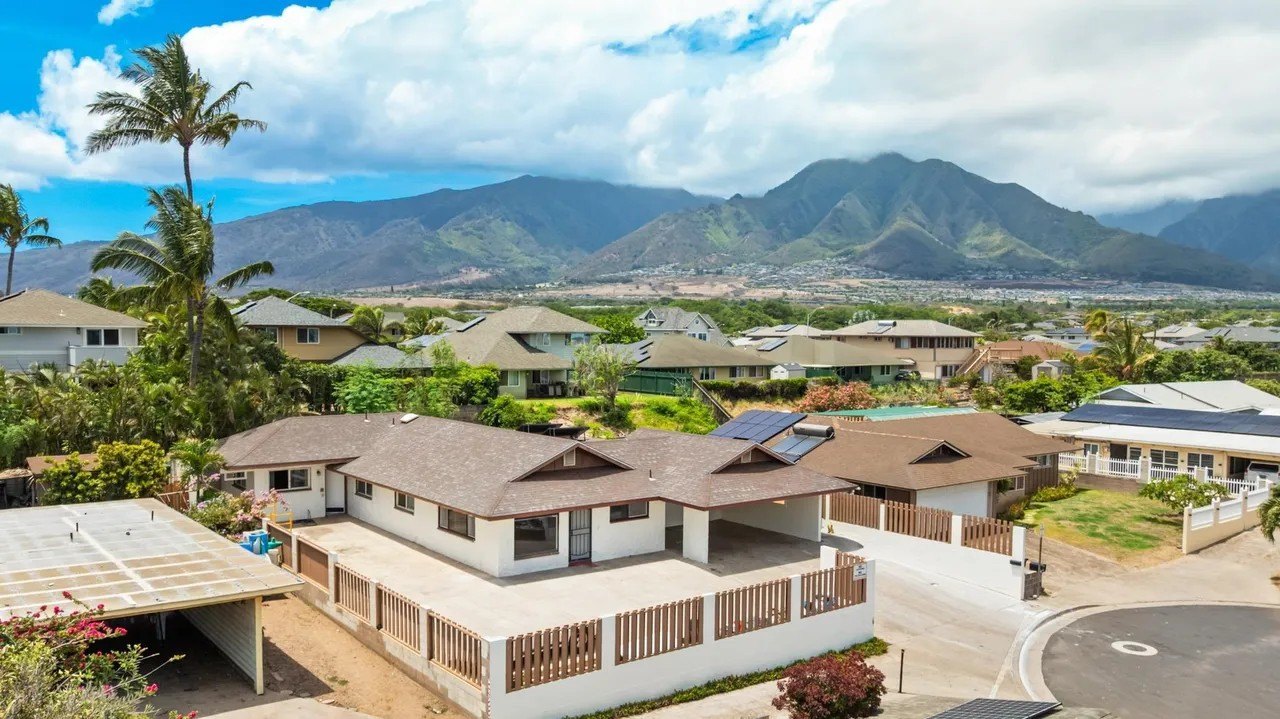Luxury living can be within reach depending on where you want to live—and several of these markets are now beckoning for investment as the cost of pricey homes drop.
Leslie Mackenzie Smith, a longtime real estate agent with Hawai‘i Life, has been selling on Maui for more than 36 years. She tells Realtor.com® that luxury clients focus heavily on “ocean views, privacy, and strong indoor-outdoor living.”
“Many want a sense of seclusion—acreage, gated settings, or homes that feel like a retreat,” Leslie says. “Turnkey properties with contemporary finishes remain especially attractive, because most luxury buyers want to enjoy the lifestyle immediately, not take on renovations.”
And homebuyers ready to invest in a piece of paradise may find this to be the right time. Out of the 10 most expensive luxury markets, eight posted annual price declines in October, according to the latest Realtor.com Luxury Housing Report.
Despite the price drop in some metros, luxury homes sold faster than last year across most tiers, with the 90th percentile moving three days faster year over year, narrowing the historical gap between luxury and typical listings.
The methodology behind the report takes luxury segmentation based on market-specific price percentile with the 90th percentile representing entry-level luxury, the 95th percentile marking high-end luxury, and the 99th percentile indicating ultra-luxury. All calculations are based on listing prices, not final sales prices.

The sharpest drop occurred in Kahului–Wailuku, HI—where the entry point to luxury fell nearly 20% year over year.
“The market has definitely cooled over the past couple of years,” explains Leslie Smith. “Inventory has increased slightly, and prices have softened in part of the market, especially compared to the very intense period we had when demand far exceeded supply. Well-priced homes are still selling—from ultra-luxury to more affordable—but today’s environment favors buyers much more than it did during the peak years.”
Anthony Smith, senior economist at Realtor.com, notes that “Hawaii was among the many states that experienced a post-pandemic boom. Remote-work flexibility and lower interest rates drew a wave of buyers to Hawaii and the Kahului–Wailuku area.”
“Luxury homes (top 10%) saw their fastest year-over-year growth in August 2021, surging 87%. Prices then moderated for two years before reaching a peak of $7 million in August 2023. Since that high point, values have steadily declined, now sitting at $3.8 million, about 46% below the all-time peak,” Anthony Smith says.
The other metros seeing the steepest price corrections can be described as pandemic-era boom towns or high-volatility resort destinations where prices overheated in recent years.
Kahului–Wailuku recorded the most significant year-over-year decline in its luxury threshold, falling nearly 20% to $3.79 million. Other notable declines include Charleston, SC (-13.1% to $1.99 million), and Atlantic City, NJ (-13% to $2.32 million), each down more than 13% compared with last year.
“Right now many of my luxury clients are actively watching for strong buying opportunities. With a bit more inventory and less competition, they feel like the timing is improving,” Leslie Smith says. “Maui remains an incredibly desirable place to own property, and because buildable land is limited, long-term demand for quality homes here stays strong.”
And with an entry level luxury price point that has dipped a bit, investors may be able to find their beachfront getaway.
Luxe living
Overall, the national benchmark for luxury homes slipped by 1.6% to $1.22 million in October—that’s down 2.2% from a year ago.
The high-end luxury tier—homes priced at the 95th percentile—dropped 2.1% lower year-over-year, despite edging up 0.1% month-over-month to $1.95 million.
At the very top of the market, the ultra-luxury segment (99th percentile) rose 1.0% in the month to $5.41 million, but remains 3.3% lower than one year ago.
The report reveals the overall U.S. luxury threshold declining by 2.2% year over year. A standout market is the North Port-Bradenton-Sarasota, FL, metro.


With a luxury entry point of $1.67 million, the area saw a nearly 20% increase in homes with top 10% listing prices over the last year, demonstrating a significant draw to Gulf Coast Florida.
“The Gulf Coast has long been a hot spot for luxury homebuyers, especially retirees,” says Anthony Smith. “The region offers year-round sunshine, warm temperatures, white-sand beaches, and calm Gulf waters, making it one of the top destinations for high-end living.”
The Gulf Coast growth outpaces all other metros by a considerable margin. The region isn’t just a fast-growing luxury hub, it’s also a go-to destination for the wealthiest retirees in the U.S.

